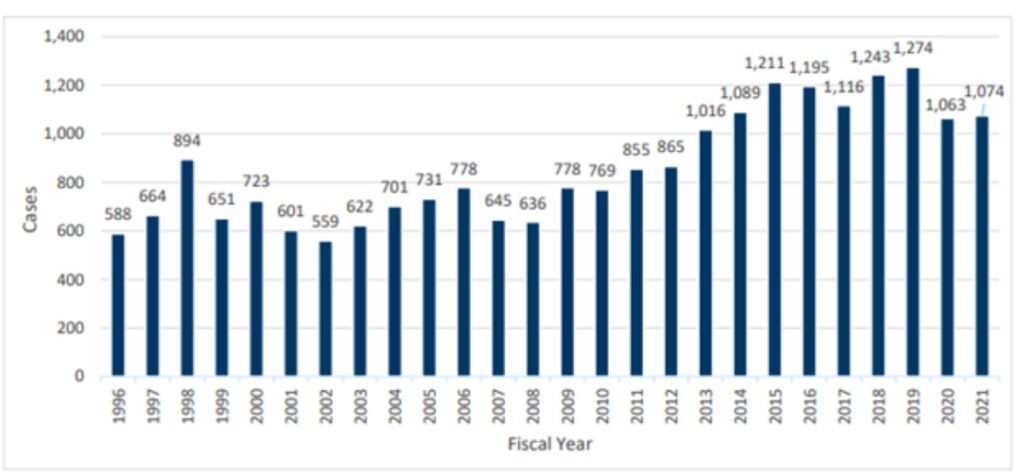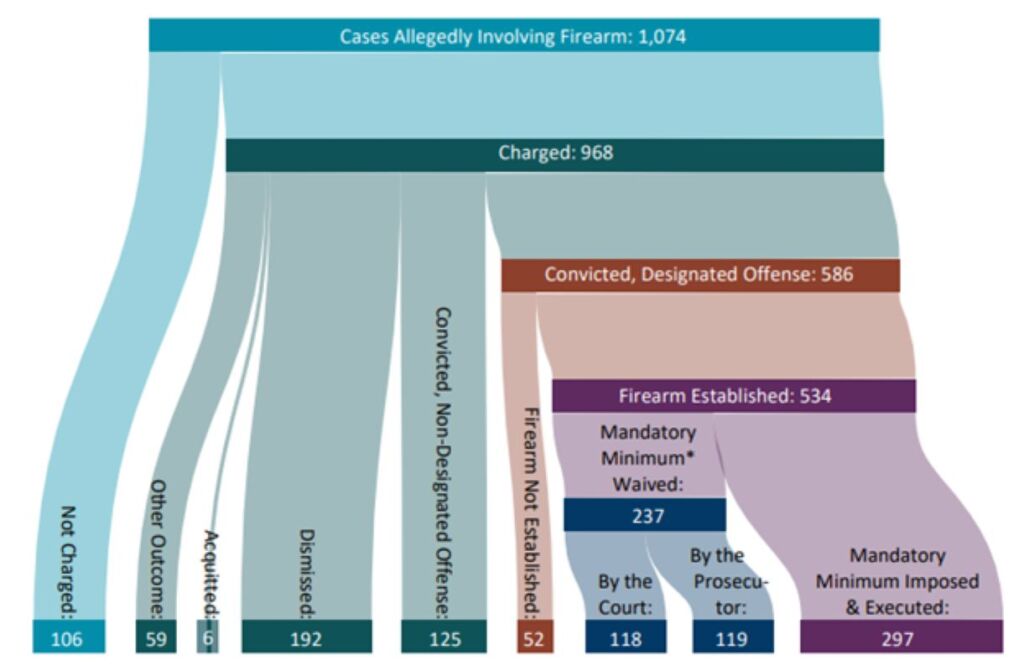Sensible efforts to reduce gun violence must focus on offender accountability, not restricting rights of the law-abiding
Increased gun violence in recent years has Minnesotans understandably concerned. Armed robberies, carjackings, aggravated assaults, drive-by shootings, school-related firearm offenses, and murders are all at unacceptable rates in our state, driven largely by the metro area.
It’s not just the volume of crimes involving a gun, but the amount of gunfire perpetrated by offenders that is out of control. During a June 2022 press conference on gun violence, Department of Public Safety Commissioner Harrington stated that the average number of spent bullet casings found at shooting scenes had grown to about 50, and that it was common for multiple offenders to fire multiple firearms during many of these shootings. Another report from this past summer indicated over 100 rounds were fired immediately adjacent to the Minneapolis Police 4th precinct, striking the building and squad cars in the lot.
Criminals are using firearms in the commission of crimes more frequently and when they do, they are firing more rounds than any time in history.
Our political leadership and the criminal justice system must act promptly and forcefully to address this extreme public safety threat. Their response must focus on offenders who are perpetrating the violence, and not focus on restricting law-abiding citizens who aren’t perpetrating the violence.
The data details the difference
Law-abiding gun owners and those with permits to carry firearms are not the problem. They are overwhelmingly law-abiding, especially involving firearms.
In 2003 Minnesota adopted the Minnesota Personal Protection Act (PPA). Since its inception, hundreds of thousands of citizens have obtained permits to carry. As of 2021, there were 387,013 active permits among some 5.7 million state residents.
Per the Minnesota Bureau of Criminal Apprehension’s 2021 Permit to Carry Annual Report, less than 1% of permit holders committed a crime, and of those crimes, less than 2% involved a crime in which a firearm was used in furtherance of the crime — equating to about 75 gun-related crimes committed statewide by permit holders. Those 75 should face strict consequences along with the other criminal offenders using guns to further their crime — no argument there — but clearly, permit-to-carry holders, who represent legal gun ownership, are overwhelmingly law-abiding.
Minnesota has relatively strict laws that aim to incapacitate those who commit crimes with guns — by incarcerating them. In fact, the legislature created statute 609.11 that mandates a minimum incarceration period for those who commit a crime with a gun — 3 years for the first offense, and 5 years for the second. This statute also eliminates eligibility for early release, ensuring that offenders who commit a crime with a gun are imprisoned under a mandatory minimum sentencing structure, with no possibility of probation, conditional release, or other early release. It couldn’t be more clear.
Inexplicably, the criminal justice system is failing to abide by this clear legal mandate. Data on this failure is compelling.
The Minnesota Sentencing Guidelines Commission (MSGC) has tracked cases allegedly involving a firearm since 1996 — see chart below.
In 1996, a year removed from the New York Times designation of Minneapolis as “Murderapolis,” our gun-related crimes stood at 588/yr. Over the next 17 years, it rose to an avg of 709/yr. Between 2013 and 2021 the state averaged 1,142/yr.

Despite the unacceptable rise in crimes involving a firearm, and laws that help incapacitate the offenders, our criminal justice system has failed to hold offenders accountable through the incarceration that is mandated by law.
In the MSGC 2018 report to the legislature, cases allegedly involving a firearm from July 2016 through June 2017 totaled 1,116. After charging decisions, trials, pleas, and other processes, only 687 qualified for the mandatory minimum sentencing. Of those 687, only 402 received a mandatory minimum sentence. In other words, only 36% of offenders who were alleged to have committed a crime involved a firearm received the mandated minimum sentencing, and only 58% of those who ultimately qualified for the mandatory minimum sentencing received it.
According to the MSGC 2022 report to the legislature, despite intense media and political pressure to address the rise in violent crime, the criminal justice system’s adherence to mandatory minimum sentencing has only worsened.
From July 2020 through June 2021, there were 1,074 cases allegedly involving a firearm. After charging decisions, trials, pleas, and other processes, only 534 qualified for the mandatory minimum sentencing. Of those 534, only 297 received a mandatory minimum sentence. In other words, only 27% of offenders who were alleged to have committed an offense with a firearm received the mandated minimum sentencing, and only 55% of offenders who ultimately qualified for minimum sentencing received it.

The direction is clear
Crimes involving firearms are on the increase and have been for years. These crimes are devastating to our collective public safety, and disproportionately effect residents in the metro area, especially neighborhoods of color.
The legislature has given the criminal justice system the tools to incapacitate offenders committing crimes with firearms. The criminal justice system is failing to use those tools as effectively as it should.
The legislature and political leadership must focus on policies and statutory changes that address the criminal justice system’s failure to hold offenders accountable, not focus on restricting the rights of law-abiding citizens. Focusing on the law-abiding citizen, under the guise of “common sense gun control,” won’t affect criminal behavior, and ultimately won’t reduce the level of gun violence.
The data clearly supports this policy position.